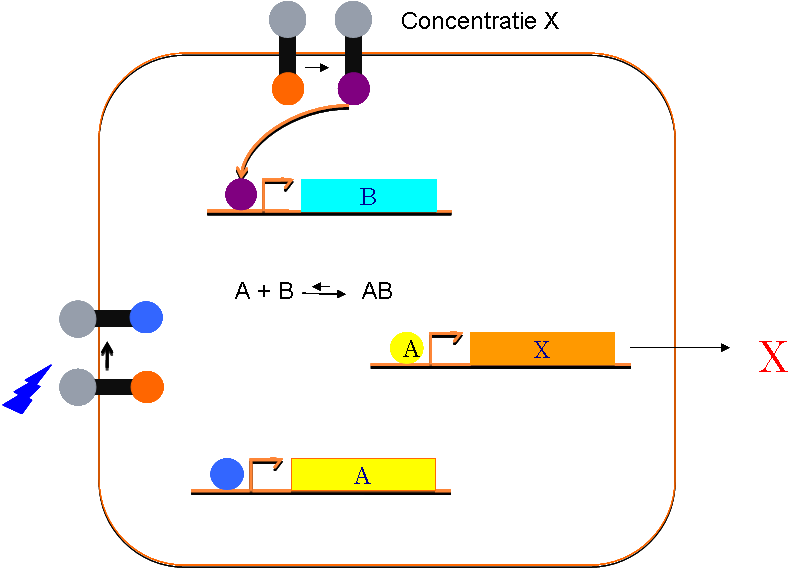Team:KULeuven/Project
From 2009.igem.org
| Modelling | Lab | Notebook | |
|---|---|---|---|
| General Notebook | |||
| Blue Light Receptor | Blue Light Receptor Modelling | Blue Light Receptor Lab | Blue Light Receptor Notebook |
| Vanillin Production | Vanillin Production Modelling | Vanillin Production Lab | Vanillin Production Notebook |
| Vanillin Receptor | Vanillin Receptor Modelling | Vanillin Receptor Lab | Vanillin Receptor Notebook |
| Key/Lock/AntiKey | Key/Lock/AntiKey Modelling | Key/Lock/AntiKey Lab | Key/Lock/AntiKey Notebook |
Essencia Coli
How it works...
Feedback control system
The novelty of this project is a unique control system that functions through a feedback mechanism. The desired value of an odour like Vanilla can be adjusted using the intensity of a blue light beam. Essencia Coli then senses the concentration of the odour molecule and activates the inhibition mechanism of an anti-key. In this way the concentration can be kept constant at any initial set point.
This concept can also be applied to other odours or even flavours. In theory, any molecule that acquires a constant value is a possible candidate.
Vanilla synthesis
To produce the odour of Vanilla, Essencia Coli synthesises Vanillin. This molecule is derived from the amino acid tyrosine, in a process involving five enzymes. The successive transcription and translation of Sam8, Sam5, COMT, fcs, ech leads to Vanillin production, which then diffuses out of the cell.
Blue Light
A key/lock mechanism opens the door to synthesis. The transcription of the 'key' gene commences when a beam of blue light hits the Blue Light Receptor, thereby activating the promotor. The intensity of the beam can be adjusted at will. The 'key' mRNA then interacts with the 'lock' and clears the road for RNA Polymerase to transcribe the five genes.
VirA/VirG Vanillin Receptor
Essencia Coli is equipped with the two component regulatory system VirA/VirG, derived from Agrobacterium tumefaciens. The VirA protein senses phenolic compounds -in this case Vanillin- and then transduces the signal through phosphate transfer to the VirG protein. VirG acts as a response regulator by binding to the upstream region of the anti-key gene and activating its transcription. The anti-key is the anti-sense mRNA of the key and will therefore block it after binding.
 "
"
